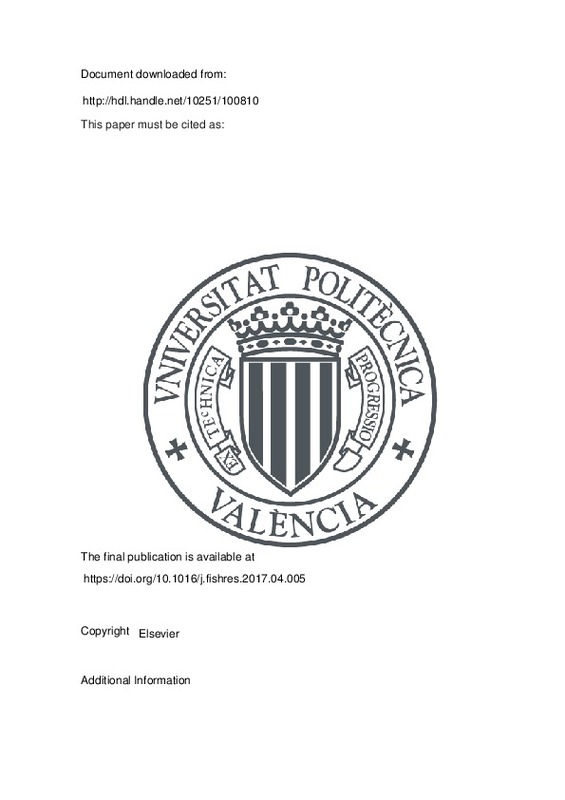JavaScript is disabled for your browser. Some features of this site may not work without it.
Buscar en RiuNet
Listar
Mi cuenta
Estadísticas
Ayuda RiuNet
Admin. UPV
Identification of potential fish stocks and lifetime movement patterns of Mugil liza Valenciennes 1836 in the Southwestern Atlantic Ocean
Mostrar el registro sencillo del ítem
Ficheros en el ítem
| dc.contributor.author | Callico Fortunato, Roberta Glenda
|
es_ES |
| dc.contributor.author | González-Castro, M.
|
es_ES |
| dc.contributor.author | Reguera Galán, Aida
|
es_ES |
| dc.contributor.author | García Alonso, José Ignacio
|
es_ES |
| dc.contributor.author | Kunert, Cecilia
|
es_ES |
| dc.contributor.author | Benedito Durá, Vicent
|
es_ES |
| dc.contributor.author | Volpedo, Alejandra
|
es_ES |
| dc.date.accessioned | 2018-04-21T04:22:44Z | |
| dc.date.available | 2018-04-21T04:22:44Z | |
| dc.date.issued | 2017 | es_ES |
| dc.identifier.issn | 0165-7836 | es_ES |
| dc.identifier.uri | http://hdl.handle.net/10251/100810 | |
| dc.description.abstract | [EN] The mullet Mugil liza is the Mugilidae that lives southernmost in the western Atlantic Ocean. Knowledge about migration, movements and identification of stocks of this important fishery resource is scarce. Thus, we aim to study movement patterns and to identify the presence of different fish stocks in the southwestern region of the Atlantic Ocean, using cumulative otolith shape morphometric and microchemical analyses of sagittae otoliths. Specimens (n = 99) were obtained in four coastal areas: Paranagua Bay in Brazil, Saniborombon Bay, Mar Chiquita Coastal Lagoon, and San Blas Bay in Argentina. Otolith shape indices (circularity, rectangularity, aspect ratio, percentage occupied by sulcus, ellipticity and form factor) were used for stock identification analysis; and otolith microchemistry using LA-ICP-MS (Sr/Ca and Ba/Ca ratios chronological variation) was used for both the analysis of movement behaviors and the identification of fish stocks (otolith edge ratios). Morphometrical indices did not reveal a clear separation among areas. San Blas bay individuals presented otoliths tending to be longer than wider, with a more elliptic shape than the otoliths from other studied areas; also, this area did not share individuals with the most northern one, Paranagua Bay in Brazil. The analysis of microchemical lifetime profiles revealed three types of behavior pattern: Type I: most frequent use of estuarine environments; Type II: a fluctuating behavior between estuarine and sea/high salinity waters; Type III: most frequent use of sea/high salinity habitats. Otolith edge analysis did not reveal differences among Sr/Ca and Ba/Ca ratios for the different areas. Thus, it cannot be assured that there is more than one stock in the studied region. Mugil Um revealed different environmental migratory behaviors in the Southwestern Atlantic Ocean showing a facultative use of estuarine waters; hence, the species appears to be mostly coastal with the use of low estuaries, as seen also by the Sr/Ca otolith cores ratios; differing from the general mugilid behavior previoulsy described. | es_ES |
| dc.description.sponsorship | The authors are grateful to CONICET (PIP 112-20120100543CO), Universidad de Buenos Aires (UBACYT 20020150100052BA) and ANPCyT (PICT 2015-1823) for financial and logistic support. We also thank Barbara Carvalho for helping in the acquisition of samples, Vicente Genoves Gomez for help in data processing, Esteban Avigliano for statistical advice, and the reviewers, especially to Carlos A. Assis, for their insight and constructive comments for improving the manuscript. | es_ES |
| dc.language | Inglés | es_ES |
| dc.publisher | Elsevier | es_ES |
| dc.relation.ispartof | Fisheries Research | es_ES |
| dc.rights | Reserva de todos los derechos | es_ES |
| dc.subject | Mugilidae | es_ES |
| dc.subject | Displacements | es_ES |
| dc.subject | Fish stocks | es_ES |
| dc.subject | Sagitta morphometry | es_ES |
| dc.subject | Sr/Ca & Ba/Ca ratios | es_ES |
| dc.subject.classification | TECNOLOGIA DEL MEDIO AMBIENTE | es_ES |
| dc.subject.classification | ECOLOGIA | es_ES |
| dc.title | Identification of potential fish stocks and lifetime movement patterns of Mugil liza Valenciennes 1836 in the Southwestern Atlantic Ocean | es_ES |
| dc.type | Artículo | es_ES |
| dc.identifier.doi | 10.1016/j.fishres.2017.04.005 | es_ES |
| dc.relation.projectID | info:eu-repo/grantAgreement/CONICET//PIP 11220120100543CO/ | |
| dc.relation.projectID | info:eu-repo/grantAgreement/UBA/UBACyT/20020150100052BA/ | |
| dc.relation.projectID | info:eu-repo/grantAgreement/ANPCyT//PICT-2015-1823/AR/La microquímica y morfometría del otolito como una herramienta para la identificación de stock pesqueros, áreas de cría e interc/ | |
| dc.rights.accessRights | Abierto | es_ES |
| dc.date.embargoEndDate | 2019-09-01 | es_ES |
| dc.contributor.affiliation | Universitat Politècnica de València. Departamento de Ingeniería Hidráulica y Medio Ambiente - Departament d'Enginyeria Hidràulica i Medi Ambient | es_ES |
| dc.description.bibliographicCitation | Callico Fortunato, RG.; González-Castro, M.; Reguera Galán, A.; García Alonso, JI.; Kunert, C.; Benedito Durá, V.; Volpedo, A. (2017). Identification of potential fish stocks and lifetime movement patterns of Mugil liza Valenciennes 1836 in the Southwestern Atlantic Ocean. Fisheries Research. 193:164-172. https://doi.org/10.1016/j.fishres.2017.04.005 | es_ES |
| dc.description.accrualMethod | S | es_ES |
| dc.relation.publisherversion | https://doi.org/10.1016/j.fishres.2017.04.005 | es_ES |
| dc.description.upvformatpinicio | 164 | es_ES |
| dc.description.upvformatpfin | 172 | es_ES |
| dc.type.version | info:eu-repo/semantics/publishedVersion | es_ES |
| dc.description.volume | 193 | es_ES |
| dc.relation.pasarela | S\350703 | es_ES |
| dc.contributor.funder | Consejo Nacional de Investigaciones Científicas y Técnicas, Argentina | |
| dc.contributor.funder | Universidad de Buenos Aires | |
| dc.contributor.funder | Agencia Nacional de Promoción Científica y Tecnológica, Argentina |







![[Cerrado]](/themes/UPV/images/candado.png)

